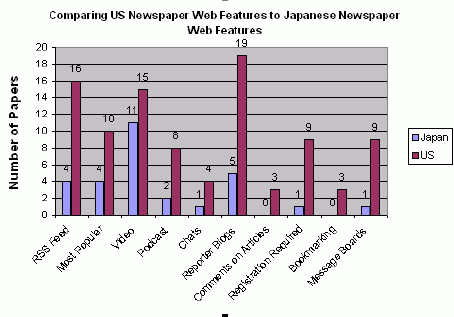As a complement to our study on the use of Web 2.0 tactics by the top 100 U.S. newspaper, we took a look at how the twenty largest Japanese newspapers are using the Internet. Overall, we found that Japanese papers are not taking aggressive Web strategies (except when it comes to cell phones), and are behind their American counterparts in terms of Web offerings. The study speculates that the lack of adoption of these tools by Japanese newspapers is a result of the structure of the Japanese newspaper industry itself and the unique newspaper culture in Japan.
Here are some of our key findings:
Here is a graph showing the results of our study, comparing the top 21 American and Japanese newspapers.

You can download our full study here.
You can find links to sister studies performed in the UK, Italy and New Zealand here.
Sign up today to have our latest posts delivered straight to your inbox.